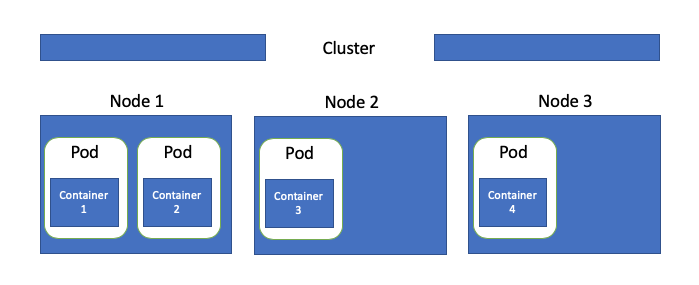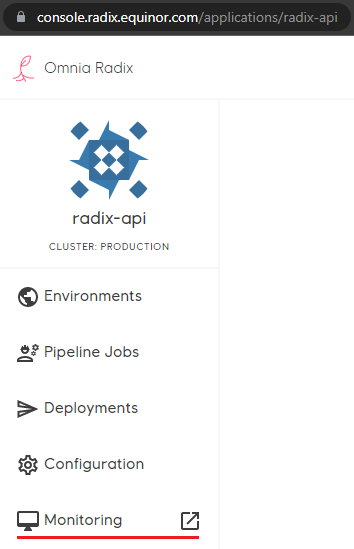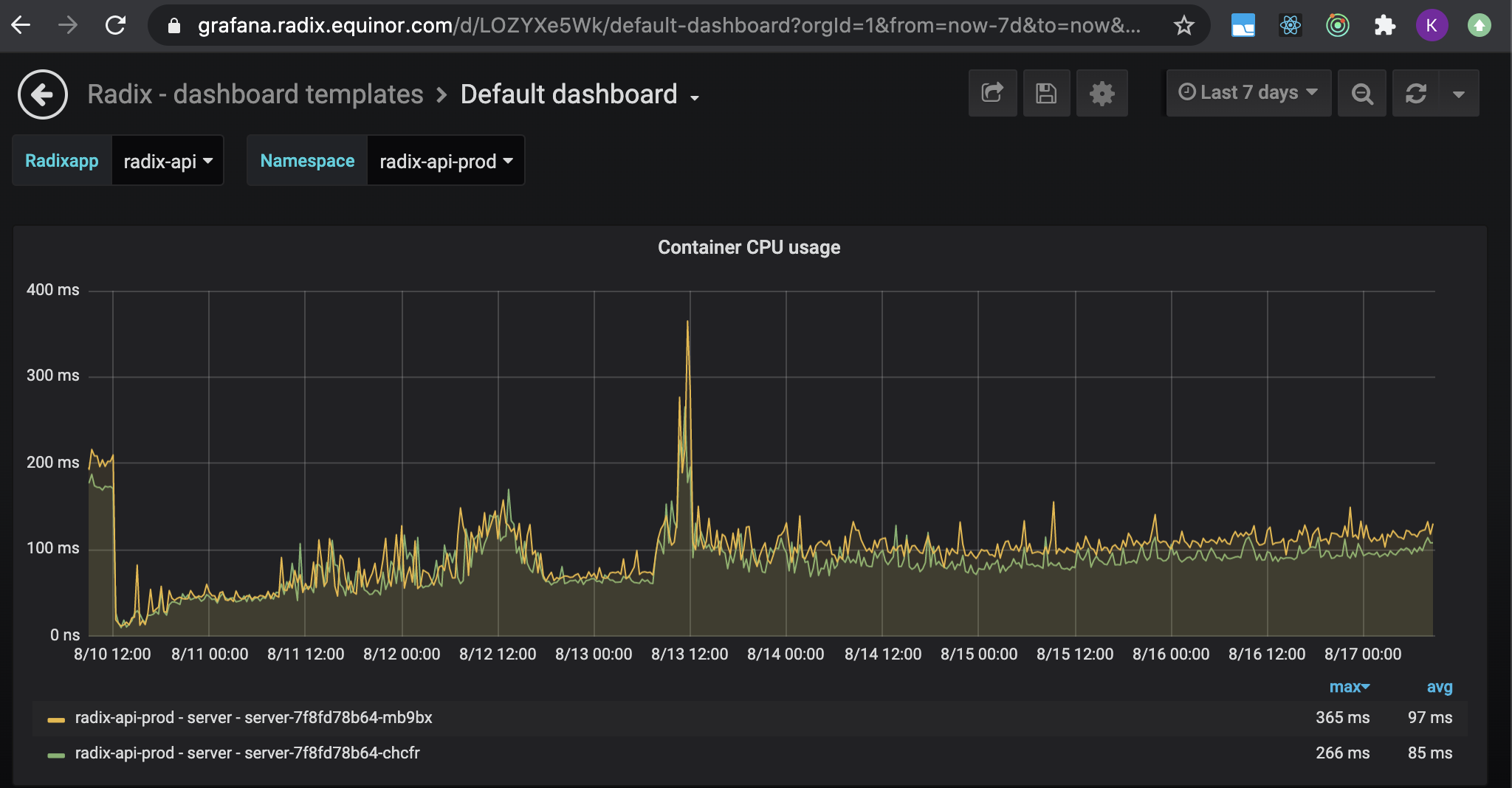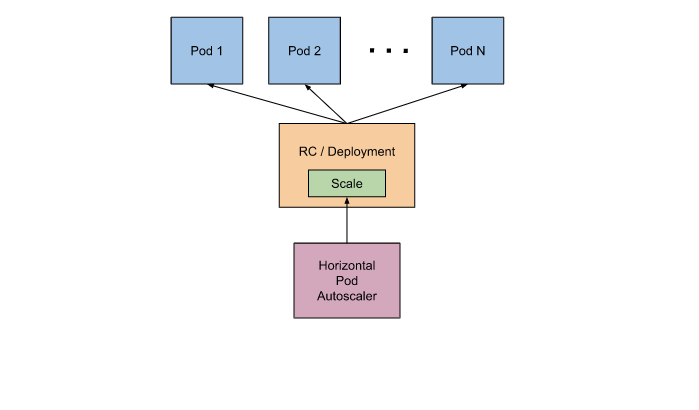Configure resource requests and limits
resources is used to ensure that each container is allocated enough resources to run as it should. limits describes the maximum amount of compute resources allowed. requests describes the minimum amount of compute resources requires.
Radix is built on top of managed Kubernetes in Azure (AKS). Kubernetes is a container orchestration platform - orchestrating containers over a set of nodes (VMs). E.g. cluster consisting of 3 nodes, hosting a set of containers:

Why should resources request and limit be set
Settings resources request and limit is important because of several reasons:
- Kubernetes scheduler guarantees that each container is allocated
resources.requests.cpuandresources.requests.memory. - If a node starts hitting CPU limits, it will prioritize and distribute CPU to containers based on
resource.requests.cpu. - Radix uses
resources.requeststo distribute infrastructure cost between teams. - Radix uses
resources.requeststo decide the size of a cluster. - Horizontal pod autoscaling uses
resources.requests.cpuas a target for when to scale up the number of containers. resources.limits.memorywill ensure that the container is stopped if there is any memory leakage.
If resources.requests and resources.limits are not provided, Radix will give a container default values. This will be used for scheduling and cost. In many cases the default provided resources would be insufficient for container, which could lead to the container being CPU throttled or in worst case killed by the OOMKiller.
How to find resource requests and limits
Monitoring can be used to find how much resources an application use. Radix uses prometheus to gather metrics and grafana for visualization. When viewing an application in Radix web console, there is a link to a default dashboard in Radix grafana instance that gives a good starting point for monitoring an app.

The default dashboard contains a number of graphs, monitoring different part of an application. For setting resources "Container CPU usage" and "Container memory usage" can be used.
CPU and memory are typically impacted by load on an application. If the application is in production, there will already be data that can be used for deciding resources. If not, next step involves either running an automated or manual simulation of production environment. It does not need to be very advanced, but it should be possible to see how it behaves under different load.
Monitoring memory and CPU over time is important, as it can change based on a numerous factors (e.g. new runtime environment, changes to code, increased load, etc). The resources.requests adjust set can therefore change during its lifecycle.
Select a single environment and time interval, that represent normal usage for that application. Further examples are based on radix-api, where production environment and a period of 7 working days has been selected.
CPU
CPU is a compressible resource, meaning that if a container hits CPU limit, Kubernetes starts throttling the container. For most application throttling means it will be slower, but it will still be able to serve requests.
If an underlying node hits CPU limit, it will start throttling CPU resources for containers running on that node. Distribution/priority of CPU for containers running on the node will be based on resources.requests.cpu (how much CPU each container will be given). resources.requests.cpu is still guaranteed for each container, its only the CPU utilization above resources.requests.cpu thats throttled
By clicking a graph, "Container CPU usage", a more detailed view appears.

The graph shows how many containers are running in production and how the CPU usage has been the last 7 days for each container. Tests are run continuously towards radix-api, so there will always be a base CPU usage. This does not need to be the case with other API.
For radix-api normal load gives between 100-200ms of CPU time, peaking at around 400ms. Given us the following setup:
resources:
requests:
cpu: "200m"
limits:
cpu: "500m"
This will allocate 200ms CPU to each container.
Because of a limit (1, 2) in kubernetes and cgroups on how throttling is done, it is recommended to keep resources.limits.cpu empty or set it to a multitude of 1000ms. The configuration for radix-api could then be:
resources:
requests:
cpu: "200m"
limits:
cpu: "2000m"
Memory
Go back to the Default dashboard and select graph Container memory usage.

Memory is a non-compressible resource, meaning that if a container requires more memory to run than what is available it will be killed. To guarantee that a container has enough memory available, resources.requests.memory is recommended to be set to the same value as resources.limits.memory.
The value should be set a little higher than the highest memory consumption observed over period of time with different loads, not accounting for memory leaks. Since the highest memory consumption observed for radix-api was around 300M, we set the resource requirements a little higher.
resources:
requests:
memory: 400M
resources.limits.memory is set automatically to the same value as in the resources.requests.memory. This ensures that 400M is always allocated to each container in the radix-api.
resources:
requests:
memory: 400M
limits:
memory: 400M
Default resources
When resources values are not explicitly defined, they are set to following values
resources:
limits:
memory: 500M
requests:
cpu: 100m
memory: 500M
These default values can be changed on the cluster in the future if needed.
More information can be found on Google - e.g. "Kubernetes best practices: Resource requests and limits"
Autoscaling
For modern application development in Kubernetes and in Radix it is preferred to create applications that scales horizontally rather than vertically. In horizontal scaling, when there is need for more compute an extra container (pod) is added, but memory and CPU stays fixed.

For Radix this can easily be configured with horizontalScaling in radixconfig.yaml. It can scale components up and down based on CPU and memory utilization of the containers. More information can be found at kubernetes docs